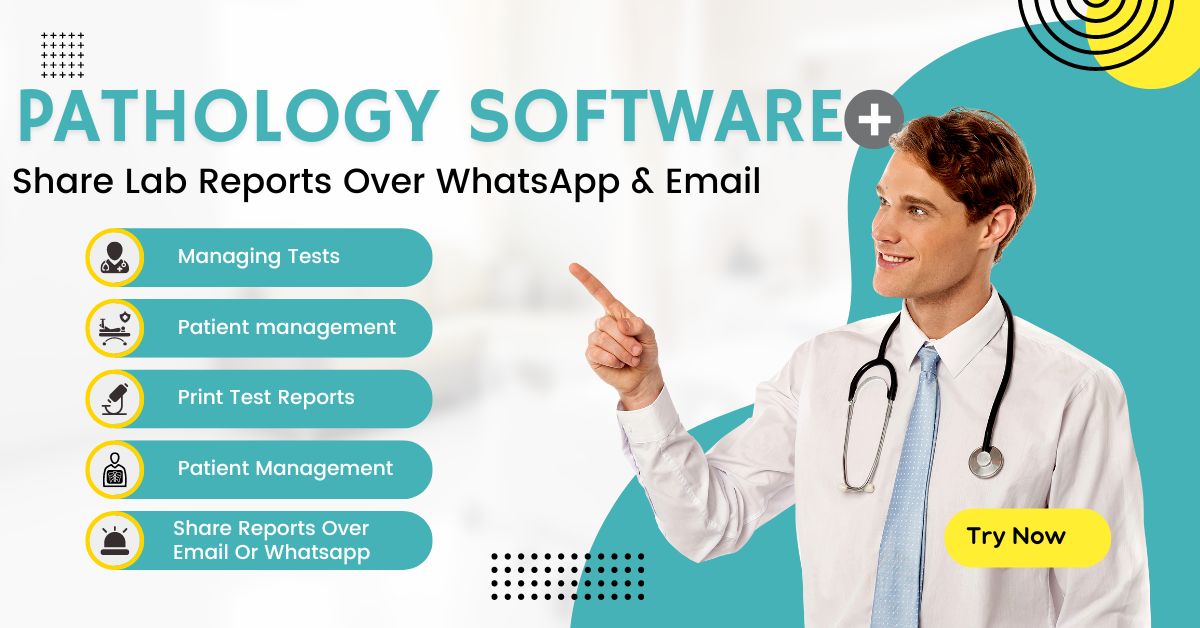Project governance is a fundamental aspect of modern organizational management that provides a structured framework for overseeing and managing projects effectively.
Project governance establishes clear roles and responsibilities, defines decision-making processes, and emphasizes stakeholder engagement to foster collaboration and ownership. In fact, project teams with mature system tend to meet 77% of their goals. It ensures that projects are aligned with the organization’s overall mission and vision, promoting a seamless integration of project activities into the broader business strategy.
This blog delves into project governance’s components, challenges, and benefits, highlighting its pivotal role in enhancing project success rates and driving organizational excellence. By understanding the intricacies of project governance, organizations can create a robust foundation for effective project management, enabling them to navigate complexities and achieve successful project outcomes in an increasingly competitive and fast-paced world.
What Is Project Governance?
To define project governance, it refers to the framework of policies, procedures, and decision-making processes put in place to ensure the successful project governance planning, execution, and management of a project. It involves defining roles, responsibilities, and accountability for project stakeholders, such as sponsors, project managers, and team members.
Pro-tip
To excel in project governance and ensure successful project outcomes, Always begin by ensuring that projects are closely aligned with the organization’s strategic objectives. By understanding how each project contributes to the bigger picture, you can prioritize projects effectively and allocate resources appropriately.
The governance structure aims to provide oversight, control, and alignment with the organization’s objectives, guiding the project toward its intended goals and delivering value to stakeholders. Effective IT project governance facilitates transparency, risk management, and timely decision-making, fostering project success and minimizing potential challenges.
The Framework of Project Governance
The framework of project governance is a structured approach and set of guidelines that govern the planning, execution, and control of projects within an organization. It provides a systematic structure for decision-making, accountability, and oversight to ensure that projects align with strategic goals and deliver value to stakeholders. A well-defined project governance framework helps in maximizing project success and minimizing risks and challenges.
Why Is Project Governance Important?
Project governance is of utmost importance in ensuring the successful planning, execution, and delivery of projects within an organization. It provides a structured framework and oversight that aligns projects with the organization’s strategic objectives and ensures value delivery to stakeholders. Several key reasons highlight the significance of project governance –
1. Alignment with Organizational Goals
Project governance ensures that projects are aligned with the overall strategic goals and objectives of the organization. It helps select and prioritize projects that best support the organization’s mission and vision, ensuring that resources are utilized efficiently.
2. Strategic Decision-Making
The Project Governance Board, comprising senior stakeholders and leaders, plays a crucial role in strategic decision-making for projects. By providing guidance and support, the board ensures that projects remain on track and aligned with the organization’s long-term vision.
3. Efficient Resource Allocation
Effective project governance ensures that resources, such as budget, manpower, and time, are allocated optimally across projects. It prevents duplication of efforts, minimizes wastage, and maximizes the organization’s return on investment.
4. Risk Management
Project governance incorporates risk management practices to identify and mitigate potential risks and uncertainties. Early identification of risks allows proactive planning and reduces the likelihood of project delays, cost overruns, or failure.
5. Accountability and Responsibility
Clearly defined roles and responsibilities under project governance enhance accountability among project stakeholders. Each individual understands their role and contribution, ensuring a collective effort toward project success.
6. Timely Decision-Making
Project governance establishes decision-making processes that expedite problem-solving and issue resolution. The predefined authority levels enable quick approvals and empower project managers to take necessary actions promptly.
7. Transparent Communication
Project governance fosters transparent communication among stakeholders. Regular progress reporting and communication channels enable stakeholders to stay informed about project status, risks, and achievements.
8. Stakeholder Engagement
Involving key stakeholders, including sponsors and executives, in the Project Governance Board fosters stakeholder engagement and buy-in. Engaged stakeholders are more likely to provide the necessary support and resources for project success.
What Does Project Governance Include?
Project governance is a comprehensive framework that encompasses various essential elements to ensure successful project management within an organization. At its core, project governance includes the establishment of a Project Governance Board (PGB) or Steering Committee, consisting of senior stakeholders who provide strategic direction and oversight.
The PGB plays a crucial role in decision-making, prioritizing projects, and ensuring alignment with the organization’s strategic goals. A Project Charter serves as the foundation of the governance framework, defining the project’s purpose, objectives, scope, timelines, budget, and key stakeholders, setting the project’s boundaries and objectives.
Another critical aspect of project governance is the clear definition of roles and responsibilities of all project stakeholders, from the project manager to team members, sponsors, and external partners. This ensures accountability and promotes effective communication and collaboration within the project team.
The framework sets out structured decision-making processes, delineating levels of authority and criteria for making decisions. Risk management practices are integrated into project governance, with a focus on identifying, assessing, and managing risks to minimize potential threats and uncertainties. Regular performance monitoring and reporting keep stakeholders informed about project progress and enable informed decision-making.
What Is the Role of Technology in Project Governance?
Technology plays a significant role in modern project governance, revolutionizing how projects are planned, executed, and monitored. It has become an indispensable tool for enhancing efficiency, transparency, collaboration, and decision-making throughout the project lifecycle. The role of technology in project governance includes:
1. Project Management Software
Advanced project management tools offer features such as task tracking, scheduling, resource allocation, and progress reporting.
These software solutions streamline project planning and execution, allowing project managers to allocate resources effectively and monitor progress in real-time. Cloud-based platforms enable remote access to project data, promoting seamless collaboration among team members, regardless of their physical location.
2. Communication and Collaboration Tools
Technology facilitates seamless communication and collaboration among project stakeholders. Virtual meetings, video conferencing, instant messaging, and collaborative platforms allow team members, sponsors, and stakeholders to interact, share updates, and resolve issues in real-time, fostering effective communication and timely decision-making.
3. Data Analytics and Reporting
Technology enables the collection and analysis of project data, providing valuable insights into performance, risks, and project health. Data-driven reporting and dashboards offer visual representations of key performance indicators (KPIs), helping project managers and the Project Governance Board make informed decisions and proactively address potential issues.
4. Document Management Systems
Digital document management systems centralize project documentation, ensuring that all stakeholders have access to the latest project information. This promotes version control, reduces manual errors, and enhances collaboration on project-related documents.
5. Risk Management Tools
Technology supports the identification, analysis, and tracking of project risks. Risk management tools help project teams quantify risks, assess their potential impact, and devise mitigation strategies, minimizing potential disruptions to project progress.
6. Project Portfolio Management (PPM) Software
PPM software enables organizations to assess and manage their entire project portfolio. It allows project managers and leaders to prioritize projects, allocate resources strategically, and align projects with the organization’s strategic goals.
7. Virtual Workspaces
In today’s globalized work environment, technology facilitates virtual workspaces that enable distributed teams to collaborate seamlessly. Virtual workspaces foster inclusivity, allowing team members from different locations and time zones to contribute effectively.
Three Pillars of Project Governance
The three pillars of project governance represent the fundamental principles and key areas of focus that underpin effective project management within an organization. These pillars form a strong foundation for successful project delivery and ensure alignment with strategic goals, risk management, and stakeholder engagement. Let’s delve into each pillar in detail:
1. Strategic Alignment
Strategic alignment is the first pillar of project governance and emphasizes the importance of ensuring that projects are closely aligned with the organization’s strategic goals and objectives. Before initiating any project, it is crucial to assess how it contributes to the overall mission and vision of the organization. Projects that are strategically aligned are more likely to receive support from top management and stakeholders, ensuring the necessary resources and commitment for successful execution.
The strategic alignment pillar involves conducting feasibility studies, business case analyses, and project assessments to determine whether the project aligns with the organization’s long-term plans and priorities. It requires a thorough understanding of the organization’s strategic direction and a clear articulation of how the project’s outcomes will add value to the organization. Regular reviews and alignment checks throughout the project lifecycle help maintain the project’s relevance and adaptability to changing strategic priorities.
2. Risk Management
The second pillar of project governance is risk management, which involves identifying, assessing, and managing potential risks that may impact the project’s success. Risk management is a proactive approach to dealing with uncertainties and mitigating potential threats before they become issues. It is an ongoing process that requires continuous monitoring and adaptation as the project progresses.
Within the risk management pillar, project teams identify and categorize risks, assess their likelihood and potential impact, and develop risk response strategies. These strategies may involve risk avoidance, risk transfer, risk mitigation, or risk acceptance, depending on the nature of the risks. Effective risk management ensures that the project team is well-prepared to handle unforeseen challenges, minimizes disruptions to project progress, and enhances the overall success rate of the project.
3. Stakeholder Engagement
The third pillar of project governance is stakeholder engagement, emphasizing the importance of involving and communicating with all relevant stakeholders throughout the project’s lifecycle. Stakeholders include project sponsors, executives, team members, customers, end-users, and other parties impacted by the project’s outcomes. Effective stakeholder engagement fosters collaboration, builds trust, and ensures that the project’s objectives align with the needs and expectations of key stakeholders.
The stakeholder engagement pillar involves conducting stakeholder analyses to identify their interests, concerns, and level of influence over the project. Communication plans are developed to outline how and when project information will be shared with stakeholders.
What Are the Components of Project Governance?
Project governance encompasses a set of components and practices that collectively ensure effective oversight, control, and alignment of projects with organizational objectives. These components create a structured framework that guides project management activities from initiation to completion. Let’s explore the key components of project governance in detail –
1. Project Governance Board (PGB) or Steering Committee
The Project Governance Board is a group of senior stakeholders, such as executives, sponsors, and key leaders, who provide strategic direction and oversight for the project. The PGB plays a crucial role in decision-making, prioritizing projects, and ensuring alignment with the organization’s strategic goals. They provide guidance and support to the project team and are responsible for resolving major project issues and conflicts.
2. Project Charter
This project governance framework example typically begins with the creation of a Project Charter. The Charter serves as the foundation of the project, outlining its purpose, objectives, scope, deliverables, timelines, budget, and key stakeholders. It provides formal authorization for the project to proceed and offers a clear understanding of the project’s boundaries and constraints.
3. Roles and Responsibilities
Clearly defining roles and responsibilities of all project stakeholders is essential for effective project governance. This includes identifying the authority levels of the project manager, team members, sponsors, and other participants. By understanding their specific contributions and accountability, stakeholders can work collaboratively, reducing confusion and streamlining decision-making.
4. Decision-Making Processes
The project management governance framework sets out the decision-making processes and escalation procedures for the project. It clarifies which decisions require approval from the Project Governance Board and which decisions can be made by the project manager or team members. This structured approach ensures that decisions are made efficiently and in alignment with project objectives.
5. Risk Management
Risk management is a critical component of project governance. It involves identifying, assessing, and managing risks that could impact the project’s success. Risk management activities are proactive, aiming to mitigate potential threats and exploit opportunities. By addressing risks early, project teams can avoid or reduce the impact of uncertainties on project outcomes.
6. Performance Monitoring and Reporting
Monitoring project performance and regularly reporting progress to stakeholders are essential for effective project governance. Key performance indicators (KPIs) are established to measure the project’s progress, budget adherence, quality, and other critical factors. Regular reporting enables stakeholders to make informed decisions and take corrective actions if necessary.
7. Change Management
Change management processes are integrated into project governance to handle changes in project scope, objectives, or requirements. Change control procedures ensure that changes are evaluated, approved, and implemented in a controlled manner, minimizing disruptions to the project and maintaining stability.
8. Compliance and Quality Assurance
Project governance ensures that projects comply with relevant laws, regulations, and internal policies. Quality assurance processes are implemented to maintain the project’s quality standards and ensure that deliverables meet the expected quality criteria.
9. Stakeholder Engagement
Engaging stakeholders throughout the project lifecycle is a crucial aspect of project governance. Effective communication and involvement of stakeholders build support and buy-in for the project, increasing the chances of project success.
10. Post-Project Reviews and Lessons Learned
Project governance often includes post-project reviews and lessons learned sessions. These activities allow organizations to reflect on project outcomes, identify successes, and areas for improvement. The insights gained are then incorporated into future projects, enhancing project management practices.
What Are the Key Challenges in Implementing Project Governance?
Implementing project governance can be a complex and challenging endeavor for organizations. While project governance is crucial for successful project management, it requires careful planning, coordination, and commitment from all stakeholders. Some of the key challenges in implementing project governance are as follows –
1. Resistance to Change
One of the most significant challenges in implementing project governance is resistance to change. Introducing a structured governance framework may disrupt existing project management practices and challenge established power dynamics. Stakeholders who are accustomed to more decentralized decision-making may resist the shift towards a centralized governance model, leading to conflicts and delays in implementation.
2. Lack of Organizational Support
Successful project governance requires strong support from top management and key stakeholders. If there is a lack of buy-in or support from influential individuals within the organization, it can hinder the implementation process. Without clear support, project managers may struggle to enforce governance practices, and project teams may not take governance guidelines seriously.
3. Defining Roles and Responsibilities
Clearly defining roles and responsibilities is a critical aspect of project governance. However, in complex organizations, overlapping responsibilities or ambiguous roles can create confusion and conflicts. Identifying the appropriate stakeholders and assigning their responsibilities in the governance framework may require thorough analysis and negotiation.
4. Resource Constraints
Implementing project governance often requires investment in technology, training, and process improvements. Limited resources, such as budget and time, may pose challenges in adopting new tools and conducting training programs for project teams. Organizations need to strike a balance between implementing governance practices and managing their ongoing projects.
5. Cultural and Organizational Differences
Project governance should align with the organization’s culture and values. In multinational or diverse organizations, cultural differences and varying management practices can make it challenging to establish a uniform governance approach that is applicable across all projects and locations.
6. Balancing Flexibility and Control
Striking the right balance between flexibility and control is another challenge in project governance. While governance aims to provide structure and oversight, it must also allow room for creativity and adaptability to respond to changing project conditions. Overly rigid governance frameworks may stifle innovation, while too much flexibility may lead to inconsistent project outcomes.
7. Lack of Project Governance Expertise
Implementing effective project governance requires expertise in project management, risk management, and stakeholder engagement. Organizations that lack experienced project governance professionals may struggle to develop and execute an appropriate governance framework.
8. Communication and Training
Effective communication and training are vital for successful implementation. Stakeholders need to be informed about the purpose, benefits, and processes of project governance. Lack of proper communication and training can lead to misunderstandings, resistance, and suboptimal adoption of governance practices.
9. Sustaining Governance Practices
Maintaining project governance practices over the long term can be challenging. As project teams change, and organizational priorities shift, it is crucial to sustain commitment to governance principles and ensure that the governance framework evolves to meet changing needs.
How to Use a Project Governance Model?
Using a project governance model involves a systematic approach to oversee and manage projects within an organization. It provides a structured framework for decision-making, accountability, risk management, and alignment with strategic goals. Here’s a step-by-step guide on how to use a project governance model:
Step 1 Define the Governance Structure
Start by defining the governance structure, including the Project Governance Board (PGB) or Steering Committee. Determine the composition of the board, the roles of each member, and the frequency of meetings. Assign a project sponsor or executive who will lead the PGB and provide strategic direction.
Step 2 Develop a Project Charter
Create a Project Charter for each project. The charter outlines the project’s purpose, objectives, scope, timelines, budget, and key stakeholders. It serves as the formal authorization for the project and provides clarity on its boundaries and constraints.
Step 3 Define Roles and Responsibilities
Clearly define roles and responsibilities for all project stakeholders, including the project manager, team members, sponsors, and external partners. Establish decision-making authority levels and ensure each individual understands their contributions and accountability.
Step 4 Implement Risk Management Practices
Integrate risk management practices into the governance model. Identify potential risks, assess their likelihood and impact, and develop risk response strategies. Regularly review and update the risk register to address new risks as they arise.
Step 5 Establish Communication and Reporting Channels
Set up communication and reporting channels to keep stakeholders informed about project progress, issues, and achievements. Regularly report key performance indicators (KPIs) to the PGB and other stakeholders to facilitate informed decision-making.
Step 6 Monitor and Review Project Performance
Continuously monitor project performance against the defined objectives and KPIs. Conduct periodic reviews with the PGB to assess project health, address challenges, and make necessary adjustments.
Step 7 Integrate Change Management
Incorporate change management practices to handle changes in project scope, objectives, or requirements. Ensure that changes are evaluated, approved, and implemented in a controlled manner.
Step 8 Align Projects with Strategic Goals
Regularly assess projects’ alignment with the organization’s strategic goals and priorities. Adjust project priorities and resource allocation to ensure projects support the organization’s overall mission and vision.
Step 9 Foster Stakeholder Engagement
Engage stakeholders throughout the project lifecycle to build support and gather feedback. Maintain open communication and involve stakeholders in decision-making processes.
Step 10 Conduct Post-Project Reviews
After project completion, conduct post-project reviews and lessons learned sessions. Analyze project outcomes, identify successes and areas for improvement, and incorporate insights into future projects and the governance model.
Step 11 Evolve the Governance Model
Continuously evaluate the effectiveness of the project governance model and make necessary improvements. Consider feedback from stakeholders and adapt the model to meet changing organizational needs and project requirements.
Examples of Project Governance
Project governance can take various forms depending on the organization’s structure, size, and complexity of projects. Here are some examples of project governance models –
1. Centralized Project Governance
In this project governance example, it is centralized under a dedicated Project Governance Board (PGB) or Steering Committee. The PGB consists of senior executives and key stakeholders who provide strategic direction and oversight for all projects within the organization. This centralized approach ensures consistency in decision-making, resource allocation, and risk management across projects. It also facilitates alignment with the organization’s strategic goals and promotes standardization of project management practices.
2. Decentralized Project Governance
In a decentralized governance model, project governance is distributed across various business units or departments. Each unit has its own project governance structure, and projects are managed independently within their respective units. Decentralized governance allows for flexibility and adaptability to unique project requirements. However, it may pose challenges in terms of resource allocation, prioritization, and coordination across different projects and units.
3. Hybrid Project Governance
The hybrid governance model combines elements of centralized and decentralized governance. It involves a central Project Governance Board that oversees enterprise-wide project portfolio management, ensuring alignment with organizational objectives. At the same time, individual business units or departments may have their governance bodies that manage projects specific to their areas of expertise. The hybrid model strikes a balance between consistency and flexibility, offering a tailored approach to project governance.
4. Project Management Office (PMO)-Based Governance
In this model, project governance is driven by a centralized Project Management Office (PMO). The PMO establishes project management standards, processes, and best practices, providing guidance and support to project teams.
The PMO ensures that projects adhere to governance guidelines and align with organizational strategies. It may also conduct project reviews, perform risk assessments, and facilitate knowledge sharing among projects.
5. Collaborative Governance
Collaborative project governance emphasizes stakeholder engagement and participatory decision-making. It involves a diverse group of stakeholders, including project sponsors, team members, customers, and end-users. Collaboration occurs at various stages of the project, from defining project objectives to monitoring progress and assessing outcomes. This approach fosters a sense of ownership and buy-in among stakeholders & project owner, leading to improved project outcomes and stakeholder satisfaction.
6. Agile Project Governance
Agile project governance is tailored for organizations using agile project management methodologies. It emphasizes iterative and incremental project delivery, adaptive planning, and regular feedback loops.
Governance practices in agile environments focus on empowering self-organizing teams, enabling fast decision-making, and facilitating continuous improvement.
Final Thoughts
Project governance plays a crucial role in ensuring the successful planning, execution, and delivery of projects within organizations. It provides a structured framework that aligns projects with strategic goals, enhances decision-making, manages risks, and fosters stakeholder engagement.
Ultimately, project governance fosters accountability, transparency, and value delivery to stakeholders. It empowers organizations to navigate complexities, adapt to changes, and drive projects toward successful outcomes. With effective project governance in place, organizations can establish a culture of excellence in project management and achieve sustainable growth and success.
Frequently Asked Questions
Who Provides Project Governance?
Project Governance is provided by a dedicated Project Governance Board (PGB) or Steering Committee, consisting of senior stakeholders who oversee and provide strategic direction for projects.
What is the Relationship Between Project Governance and Project Management?
Project Governance sets the framework, principles, and oversight for project management. It guides decision-making, risk management, and alignment with strategic goals, while project management focuses on executing the actual tasks to achieve project objectives.
What is the main purpose of project governance?
The main purpose of project governance is to ensure successful project delivery by aligning projects with strategic goals, managing risks, providing accountability, and fostering stakeholder engagement.
What are the various roles in a project governance framework?
In a project governance framework, roles include the Project Governance Board (PGB) members, project sponsors, project managers, team members, and other stakeholders responsible for decision-making, risk management, and project oversight.

Supriya is a highly skilled content writer with over 8 years of experience in the SaaS domain. She believes in curating engaging, informative, and SEO-friendly content to simplify highly technical concepts. With an expansive portfolio of long-format blogs, newsletters, whitepapers, and case studies, Supriya is dedicated to staying in touch with emerging SaaS trends to produce relevant and reliable content.
Need Any Technology Assistance? Call Pursho @ 0731-6725516





